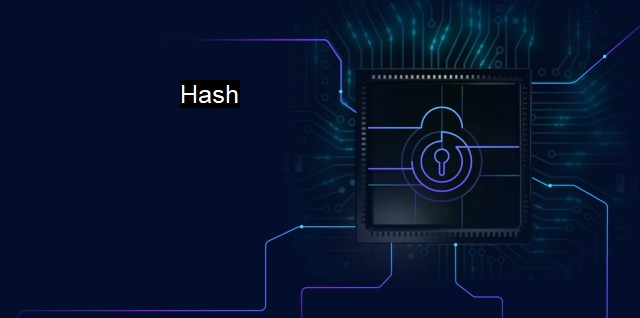What is Hash?
The Importance of Hashing in Cybersecurity, Cryptography, and Antivirus Programming: Ensuring Data Integrity and Authentication
In the domain of cybersecurity and antivirus software, the term "hash" is of utmost importance and it refers to an algorithm or function used to turn data into a number of fixed size. Hash functions are significant elements of various digital interactions in today's tech-savvy world.Fundamentally, a hash function transforms input data into an encrypted output of fixed length that represents the original information. The input data, also known as the "message," can be made up of any sequence of numbers, letters, or other symbols, while the output data, the "hash," gets rendered as a specific string of seemingly random characters.
The cryptographic hash functions are best recognized for their role in ensuring data integrity. To explain how they work, imagine receiving a document online. To ensure that the document has remained unchanged during transmission, one can check its hash value. The sender of the document uses a hash function to produce a hash and sends the text alongside the hash to the receiver. After receiving, the receiver uses the same hash function on the document. If the computed hash matches the one provided by the sender, the document is considered secure and unaltered. If even a single character of this message is altered during transmission, the hash at the recipient's end would differ significantly from what came with the document.
Hashes are also used for password security. When a user creates a password on a website, the site doesn't actually store the original password. Instead, it runs the password through a hash function, stores the resultant hash, and disposes the original password. The hash becomes a unique identifier for the password, yet it seems like gibberish to humans and hackers alike. Whenever the user enters their password, the site hashes it and compares the result to the stored hash.
Critically, it's important to note that hash functions are 'one-way', that is, they are irreversible. Given a specific hash value, one cannot decrypt the original message/data. Consequently, even if a hash value is compromised, the original data remains secure.
Indeed, the intriguing part in cybersecurity about hashing is the complexity involved in generating the same hash from two different input data. This phenomenon is accredited to the so-called "collision resistance" property of cryptographic hash functions. Collision resistance adds an additional layer of security, meaning that two distinct sets of data won’t yield the same hash output, thereby protecting the data from being compromised.
When it comes to antivirus software, hash functions also play significant roles in maintaining cybersecurity. Modern antivirus programs use hash functions as one method of identifying known threats. The antivirus vendors maintain databases of hash values assigned to recognized malware, which are updated continually. Whenever an unknown file is encountered, its hash is computed then checked against the database.
In the era of growing cybersecurity threats, hash technologies and hash-based signature systems are proving to be powerful weapons. Specifically, hash-based signatures are crucial for protecting digital information in a post-quantum computing world. Since quantum computers speed up the factorization of large numbers which is a backbone of numerous cryptographic systems, hash-based schemes are predicted to be resilient against quantum computing’s decrypting capability.
In the field of cybersecurity and antivirus measures, hash functions play a critical role in defending against fraudulent behaviors, preserving data integrity, password security, and detecting known threats in files. As technology evolves and hackers become increasingly sophisticated, the importance of understanding and leveraging hash functions is only expected to rise. Despite their relative simplicity in concept and calculation, their colossal implications for data safety and verification continue to make them a cornerstone technology area for cybersecurity.

Hash FAQs
What is a hash?
In cybersecurity, a hash refers to a cryptographic function that takes in input data and produces a fixed-size string of characters that represents the original data.What is the purpose of hashing in cybersecurity?
Hashing is commonly used to verify the integrity of data and to check for any unauthorized changes. It is also used to securely store passwords, as the original password is not stored, only the hashed value of it.How do antivirus programs use hashing?
Antivirus programs use hash values to identify known malicious files or software. The program will compare the hash value of a file on a computer to a database of known malicious hash values, and if there is a match, it will flag the file as a threat.Can hash values be reversed to reveal the original data?
Technically, hash values cannot be reversed to reveal the original data. However, it is possible for attackers to try to reverse engineer a hash value by using a technique called a hash collision, where they create a different set of input data that produces the same hash value. This is why it is important for hash functions to be secure and resistant to collisions.Related Topics
Rainbow table Brute force attack Dictionary attack Rainbow table attack Man-in-the-middle (MitM) attack
| | A | | | B | | | C | | | D | | | E | | | F | | | G | | | H | | | I | | | J | | | K | | | L | | | M | |
| | N | | | O | | | P | | | Q | | | R | | | S | | | T | | | U | | | V | | | W | | | X | | | Y | | | Z | |
| | 1 | | | 2 | | | 3 | | | 4 | | | 7 | | | 8 | | |||||||